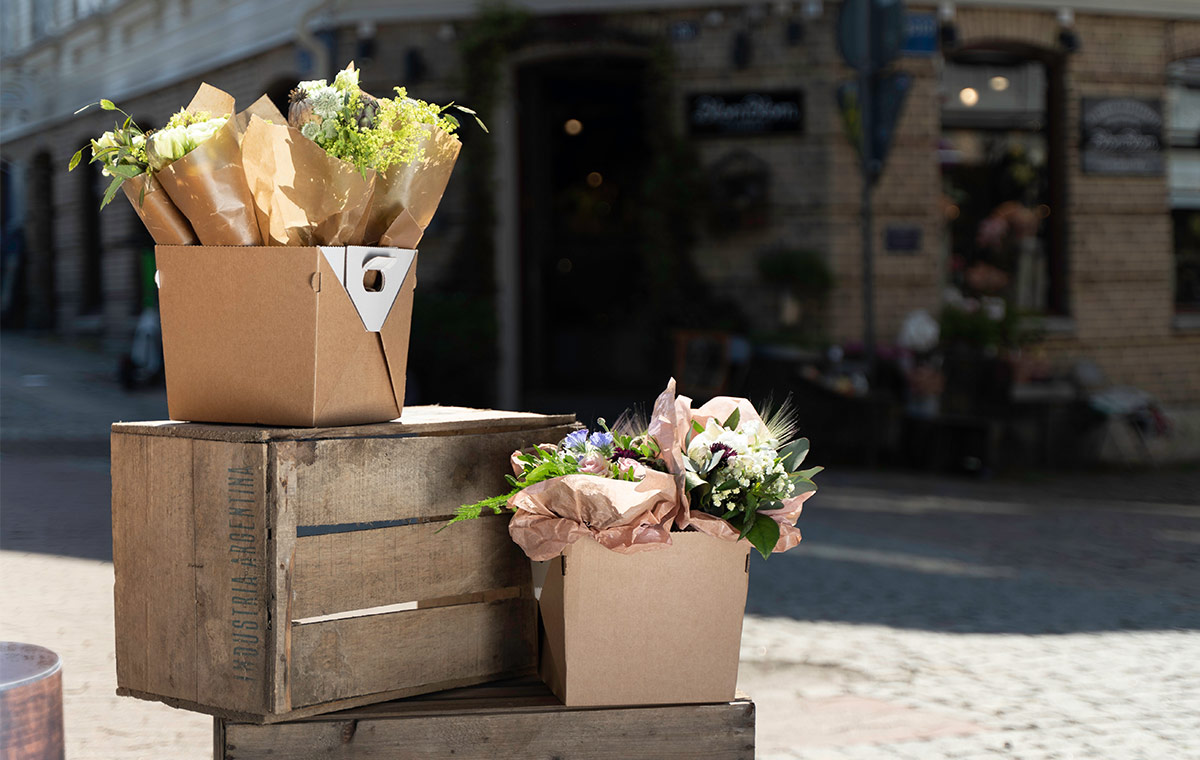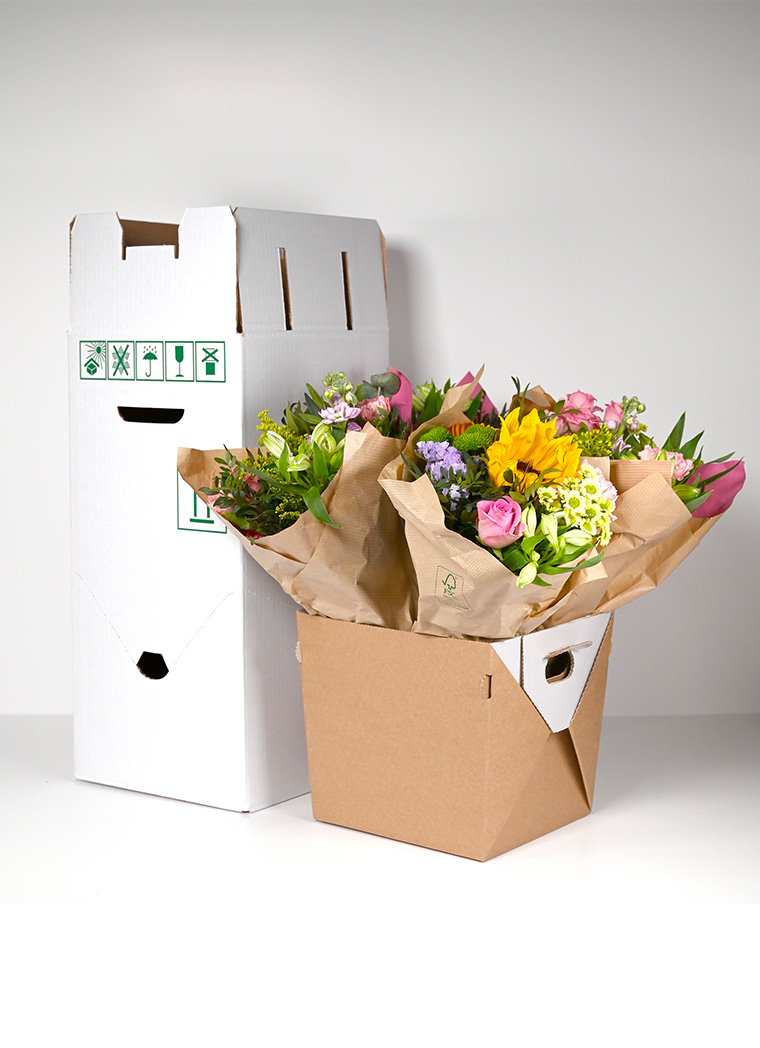
Kesko is switching out their previously used plastic buckets for transporting flowers. With this move they are saving 27 tonnes of plastic per year, an amount that corresponds to approximately 1.3 million plastic bags. Kesko’s sustainability strategy is the driver behind the switch, and replacing the plastic buckets is one action taken towards their target to drive sustainability throughout the value chain.
The EcoFlowerBox by Stora Enso was developed together with tulip grower Partaharjun Puutarha. They bought new plastic buckets every year and wanted to find a solution using less plastic. They asked for a leak-tight, cost-effective, flower packaging, that is sustainable, suitable for the logistic chain and easy to use.
With these specifications EcoFlowerBox was developed by Stora Enso packaging designer, Miia Vettenranta. It’s a box made from corrugated board, consisting of 97% renewable materials. It’s square, instead of round and stackable which makes it optimised for transport since more boxes than buckets fit on the pallets.
In storage, the boxes can be kept flat to save warehouse space. They are quick to erect. And neither tape nor glue is needed. This was important when developing EcoFlowerBox, as this stage in the production chain cannot be allowed to slow down the process for growers.
Optimised for transport
To safely transport flowers on bumpy roads from growers to stores, the EcoFlowerBox consists of two boxes in one. Why? Because:1. The transport box has a closed top and is optimising shipment efficiency compared to plastic buckets since it allows stacking the boxes on top of each other, keeping the flowers protected. For Partaharjun Puutarha, the shipment efficiency was increased with 25% as they went from fitting 60 buckets to 75 boxes on one pallet.
2. The inner box is a leak-tight box that can be used as display box in stores. It is durable and holds the water inside because of a barrier on the inner surface of the corrugated board. In cases where the flowers are not transported by pallet and truck, the inner box is enough on its own.
Both boxes can be recycled in the paper stream.
After successfully testing to transport 10 000 boxes holding flowers with different water levels, Partaharjun Puutarha scaled up. Now, a big part of their yearly production of 35-40 million tulips are packed and transported in EcoFlowerBoxes.
Thanks to smooth collaboration and quick development of this product, the EcoFlowerBox is now helping Kesko to cut down on plastic use.
“We are continuously looking for new ways to reduce the unnecessary use of plastic, as well as seeking new solutions in close cooperation with our partners in an agile manner. The transportation box for Pirkka tulips, created with Stora Enso, is one example of the results of this work,” says Timo Jäske, Sustainability Director at Kesko’s grocery trade division.
The EcoFlowerBox has received both a ScanStar and a World Star Award for its sustainable packaging concept.
Packaging design by Miia Vettenranta, Stora Enso






